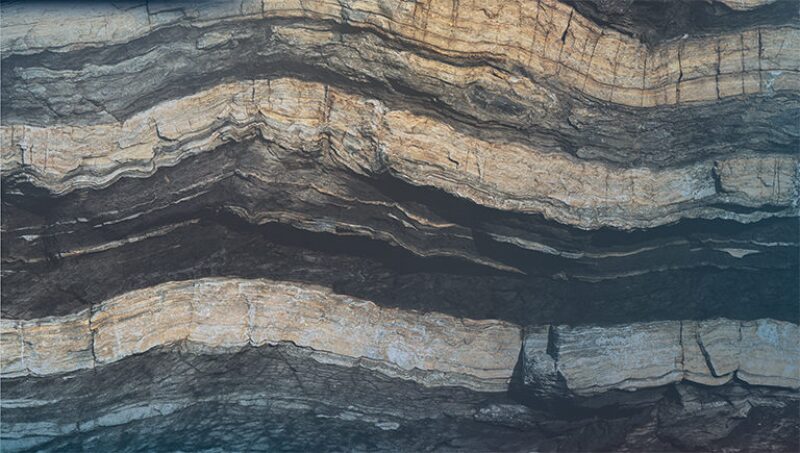Unconventional resources require technologies typically not used to produce conventional oil and gas reservoirs. In particular, starting in the late 1990s, the combination of horizontal wells and multistage hydraulic fracturing has been key to rapidly increasing success in exploiting unconventional resources. While the well completions in unconventional resources may be more expensive than those typically applied in conventional reservoirs, the advantage is access to the very large volumes of these resources, which include tight (low-permeability) gas in sandstone or carbonate rock, coalbed methane, and organic-rich source rocks classed as shale gas and tight oil.
The exploitation of shale gas, along with tight gas and coalbed methane, enabled a stunning increase in US natural gas production of approximately 4 Tcf/D from 2005 to 2010. A similar story followed a few years later for US crude oil production. Tight oil production ramped up nearly 5 million B/D over approximately 5 years, starting in 2008, and continues to rise. And it is not just the US that is benefiting—unconventional resource development is now beginning to spread to other countries around the world.
The technologies that accomplished these near miracles were developed, implemented, and continue to be im-proved largely by SPE members, and this has been reflected in an upsurge in conference presentations and journal publications related to unconventional resources over the past decade. This is illustrated by the chart (Fig. 1), which shows a dramatic increase in the percentage of peer-reviewed papers related to unconventional resources published in SPE Reservoir Evaluation & Engineering (SPEREE) beginning in 2011. Before 2011, there were only a handful of publications related to unconventional resources each year, primarily dealing with coalbed methane and fundamentals of fluid flow in tight pore systems. Beginning in 2011, publications related to the analysis and prediction of shale gas reservoir production performance showed a sharp increase, followed a few years later by publications related to tight oil reservoir performance analysis and prediction. In addition, enhanced oil recovery from tight oil reservoirs has become an increasing area of focus. This year, over half of the publications in SPEREE will be related to unconventional resources. As further indication of the increasing importance of unconventional resources, in July SPE released Unconventional Gas and Tight Oil Exploitation, the first SPE monograph devoted exclusively to the topic.

In recognition of this significant current interest in unconventional resources, the November 2018 issue of SPEREE will be a special issue devoted exclusively to this topic. At this time, the issue is slated to feature 11 peer-reviewed papers reflecting the breadth of technologies relevant to the reservoir characterization of unconventional resources and modeling their recovery performance. In an effort to ensure fresh content for the issue, the selected papers will be held from preprint publishing until the issue launches in November, so we are providing this brief glimpse into the topics that will be discussed.
Understanding the pore-scale structure and fluid transport in nanoporous rocks is fundamental to optimal development of unconventional resources. Three papers have been selected that deal with characterization and modeling of nanoporous systems. One discusses a new multiscale automated digital rock modeling work flow for representatively retaining a large volume of a rock sample while achieving nanoscale resolution of pore space and mineral distributions. Additionally, a new model is proposed to account for volume changes during measurements of gas adsorption at high temperature and pressure, and a study on the effect of pore-size distribution on the phase behavior of shale-reservoir fluids in a multiscale pore system is presented.
Characterization of the geomechanical properties of shales and its importance to the design of drilling, completion, and stimulation programs for optimized production is discussed, along with coupling of geomechanical and fluid-flow models, which is essential for analysis and prediction of unconventional production performance.
Understanding complex fracture networks and their interaction with the low-permeability matrix rock is essential for prediction of unconventional reservoir performance. In this vein, three papers have been selected that deal with characterization and modeling of the stimulated reservoir volume (SRV) associated with multistage hydraulically fractured horizontal wells (MHFHWs). A hybrid-hydraulic-fracture model composed of complex discrete fracture networks and planar fractures for modeling the SRV associated with MHFHWs is proposed, and a new modeling approach is introduced to evaluate the effect of fracture-fluid leakoff on fracture characteristics during hydraulic fracturing. Finally, the design, execution, and results of a pilot project consisting of five deviated wells drilled adjacent to an MHFHW to sample the physical characteristics of the SRV caused by hydraulic fracturing in the Eagle Ford Formation is described.
Continuing on the theme of modeling MHFHWs, three papers describe new approaches for dynamic modeling of production from shale gas and tight oil reservoirs. A methodology for calculating average reservoir pressure, original gas in place, drainage area, and optimal well spacing in shale reservoirs through the combination of dynamic data and a new material-balance equation that considers simultaneously the effects of free, adsorbed, and dissolved gas are introduced. Finally, an efficient optimization algorithm for assisted history matching and uncertainty analysis of reservoir-simulation models of unconventional resources is discussed.
Recovery from tight oil reservoirs under primary production currently averages only 5 to 10% of the original oil in place; improving recovery is a very active area of investigation. Two papers describe emerging technologies for improving recovery from tight liquid reservoirs. The first highlights the importance of integrating reservoir, wellbore, and surface-facility models to optimize recovery from shale reservoirs, especially when there is significant compositional variation within the reservoir. The second evaluates the ability of different groups of surfactants to improve oil recovery in unconventional liquid reservoirs (ULRs) by experimentally simulating the fracture treatment to represent surfactant imbibition in a ULR core fracture during soaking and flowback.
In addition to these papers, six papers related to unconventional resources were spotlighted in the May 2018 issue. Taken together, the papers published in these two issues of SPEREE provide a snapshot of the rapidly evolving suite of technologies that are currently being applied for exploitation of unconventional resources. Although there has been tremendous progress over the past decade, we have only begun to scratch the surface of technology required to fully realize the potential of the vast worldwide store of unconventional resources. Surely more advances are yet to come.

| Gary Teletzke is senior technical advisor for enhanced oil recovery and CO2 sequestration at ExxonMobil Upstream Research Company. He has led research projects related to gas-injection enhanced oil recovery, chemical-enhanced oil recovery, and compositional reservoir simulation. Teletzke has published more than 40 technical papers and patents. He has organized numerous SPE conferences over the past 2 decades and served as executive editor of SPE Reservoir Evaluation & Engineering from 2014 to 2017. Teletzke was named an SPE Distinguished Member in 2013 and currently serves as SPE Distinguished Lecturer on the topic “CO2 in the Subsurface: From EOR to Storage.” He holds a BS degree in chemical engineering from Northwestern University and a PhD degree in chemical engineering from the University of Minnesota. |

